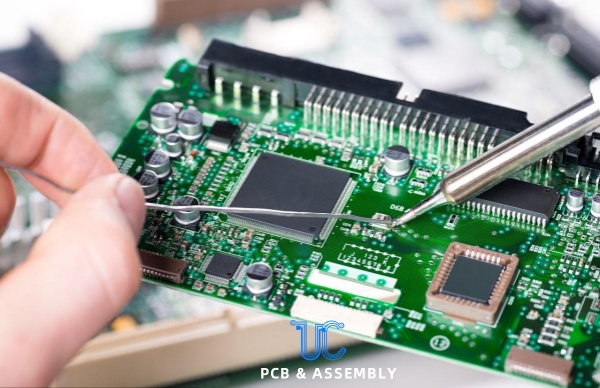Categories
Recent Posts
Soldering PCB board is a technical job that requires careful and precise operation. The following are general steps and precautions for soldering circuit boards:
Preparation work
1. Tools and materials preparation:
Welding tools: soldering station (or soldering iron), solder wire, soldering agent (optional), soldering aid (optional), tweezers, scissors, insulating tape, solder sucker, magnifying glass, etc.
Solder wire selection: Determine according to the component size and welding requirements on the circuit board. Common solder wire diameters are 0.8mm, 1.0mm, etc.
Cleaning tools: Alcohol cotton or board washing water is used to clean circuit boards and solder joints.
2. Inspection and preparation:
Check whether the bare PCB has short circuit, open circuit and other problems.
Be familiar with the schematic diagram of the development board, and compare the schematic diagram with the PCB silk screen layer to ensure consistency.
Classify the components for subsequent welding.
Welding steps
1. Clean the solder joints:
Use alcohol cotton or board washing water to clean the solder joints and the surface of the circuit board to ensure smoothness and no impurities.
2. Preheat the soldering station:
Set the soldering station temperature within an appropriate range, generally recommended to be between 250°C and 350°C. Too high a temperature may damage the circuit board or components, and too low a temperature will result in loose soldering.
3. Heat the weld:
Place the soldering iron tip on the solder joint for heating. The soldering iron tip should be clean and stained with an appropriate amount of solder.
4. Melt the solder:
Place the solder wire between the solder pad and the component pin, and use the heated soldering iron tip to apply appropriate heat to the solder wire until the solder is completely melted.
5. Soldering:
Keep the soldering iron tip in the solder joint position to ensure that the solder fully wets the solder pad and pin. The amount of solder should be moderate, not too much or too little.
6. Remove the solder wire and soldering iron:
After the solder fills the solder pad, quickly remove the solder wire. After the soldering iron has expanded to the required extent, quickly remove the soldering iron, noting that the direction of withdrawal should be along the direction of the component leads.

Precautions
1. Anti-static:
Anti-static measures should be taken during welding, such as wearing an anti-static ring, to prevent static electricity from causing damage to components.
2. Sequence and direction:
Weld components in order from low to high and from small to large, give priority to integrated circuit chips, and ensure that the chip is placed in the correct direction.
3. Distinguish between positive and negative poles:
For components with positive and negative poles, such as light-emitting diodes, electrolytic capacitors, etc., they need to be carefully distinguished and welded correctly.
4. Record and check:
Record PCB design problems found in time during welding, such as pad size, component packaging errors, etc. After welding, use a magnifying glass to check the solder joints to ensure that there are no problems such as false soldering and short circuits.
5. Safety and cleanliness:
Pay attention to safety protection during welding to avoid burns and inhalation of harmful gases. After welding, use alcohol or other cleaning agents to clean the surface of the circuit board to keep the circuit board clean and beautiful.
Our PCBA factory is equipped with multiple automated SMT lines with EMS assembly capacity of up to 150 million components per month. SMT speed can reach 8 million points per day, supported by 2 wave soldering lines and 4 DIP lines. Our
SMD patch is 3-5 million points/day Plug-in soldering: 300,000 points/day. We have strong production capacity to support your Mass orders.
Send PCB Files to Sales@ucreatepcb.com, you will get a quote very soon!
Related Posts:
1.Solutions To Poor Soldering In SMT
2.What Is Selective Wave Soldering?
4.What is Electronic Manufacturing Services (EMS)?
5.How to Choose PCB Suppliers?
Welcome to consult our sales engineer with BOM list and Gerber file